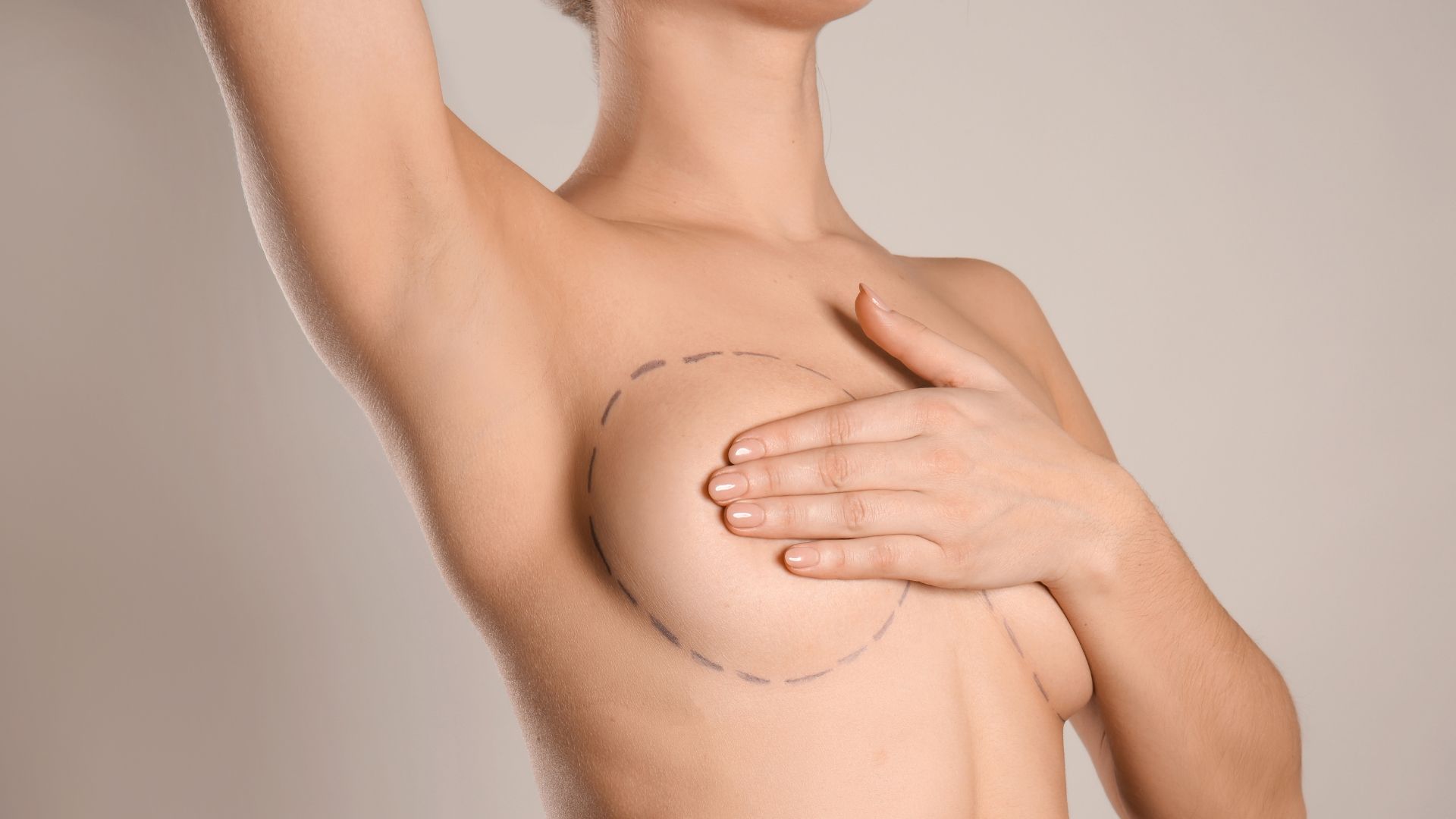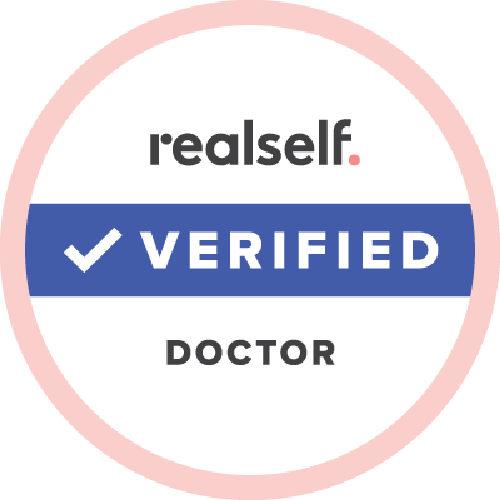Breast Reduction
Breast reduction surgery, also known as reduction mammoplasty, is a surgical procedure that removes excess breast tissue and skin to achieve a more proportional breast size. This procedure can provide significant relief to women of all ages with large, heavy breasts who experience physical discomfort and emotional distress. In this article, we will discuss in detail what breast reduction surgery entails, including its benefits, risks, and recovery process.
What is Breast Reduction Surgery?
Breast reduction surgery is a surgical procedure that aims to reduce the size of the breasts by removing excess tissue, fat, and skin. It almost always includes a breast lift since most women with large heavy breasts also experience dropping or sagging of their breasts. The procedure is typically performed under general anesthesia, and the surgeon will make incisions around the areola, down the middle of the breasts and below in the fold beneath the breast to remove the unwanted tissue. The nipple is usually repositioned to a higher location, and the remaining tissue is reshaped and tightened to achieve a more proportional and aesthetically pleasing breast contour with an “internal bra” effect.
Reasons for getting breast reduction
Women who have large, heavy breasts often experience physical discomfort and emotional distress. The excess weight of the breasts can cause back, neck, and shoulder pain, along with bra strap discomfort where the bra can dig into the shoulders and even cause grooves in severe longstanding cases. There can also be skin irritation and rashes in the breast fold underneath the breasts due to sweating and chafing. Large breasts can also interfere with daily activities and exercise, leading to a decreased quality of life. In addition to physical discomfort, women with large breasts may also experience emotional distress, such as self-consciousness and low self-esteem. A large breasted woman can often be perceived as a larger or heavier person, an appearance which few women welcome. Breast reduction surgery can alleviate these symptoms and improve a woman's overall quality of life. And an additional happy outcome is that most women report than after breast reduction surgery, they will often hear from people that they look great and look as if they have lost weight-positive feedback that can improve one’s overall feeling of self confidence.
Risks and benefits of breast reduction
Like any surgical procedure, breast reduction surgery carries a small chance for potential risks. These risks include bleeding, infection, delayed wound healing, and very rarely, adverse reactions to anesthesia. There is also a risk of complications such as loss of nipple sensation, breast asymmetry, and unsatisfactory scarring. However, the benefits of breast reduction surgery almost always outweigh the risks and patients almost uniformly report how happy they are after undergoing the procedure. In addition to reducing physical discomfort and improving self-esteem, breast reduction surgery can also improve posture and allow for a more active and healthy lifestyle.
Choosing a qualified plastic surgeon for the procedure
When considering breast reduction surgery, it is important to choose an experienced board certified plastic surgeon with specific experience performing this procedure. A board-certified plastic surgeon can provide a thorough consultation and explain the risks, benefits, and expected outcomes of the procedure. The surgeon should also have a keen eye for aesthetics and a track record of producing natural-looking results. This can be confirmed on his or her "Before and After” gallery of patient photos.
Preparing for breast reduction surgery
Before breast reduction surgery, the patient will undergo a thorough medical evaluation to ensure they are healthy enough to undergo the procedure. The surgeon will provide instructions on how to prepare for the surgery, including avoiding certain medications and dietary supplements that can increase the risk of bleeding. The patient should also arrange for someone to drive them home after the surgery and help them with daily activities during the recovery period.
Anesthesia options for breast reduction surgery
Breast reduction surgery is typically performed under general anesthesia, which means the patient will be asleep during the procedure.
Breast reduction surgery techniques
There are several techniques for performing breast reduction surgery, the most common of which involves a vertical scar or lollipop around the nipple/areola, with an anchor or "inverted T” extension into the fold beneath the breast. The surgeon will choose the technique that is best suited for the patient's anatomy and desired outcome.
Recovery from breast reduction surgery
After breast reduction surgery, the patient will need to take one to two weeks off from work, depending on the kind of work she performs. Strenuous physical activity such as exercise, vacuuming, laundry, and heavy lifting (including small children) should be avoided for at least two weeks. The surgeon will provide instructions on how to care for the incisions, including how to change dressings and when to resume showering, which can usually occur within two days following surgery. The patient will wear a supportive bra and avoid under wire bras for several weeks to ensure proper healing. Pain and discomfort can be managed with medication prescribed by the surgeon. Often a small drain will be used and easily removed within 24-48 hours following surgery. The surgery can be performed as an outpatient, or with a one night hospital stay if the patient prefers this.
Managing pain and discomfort after breast reduction
After breast reduction surgery, it is normal to experience some pain and discomfort but this is usually easily managed with Acamol or Optalgin. The surgeon will provide pain medication to manage these symptoms. It is important to follow the surgeon's instructions regarding medication. The incisions are usually closed with dissolvable sutures and glue or tape that will not need to be removed for at least one to two weeks, after which scar massage may be recommended by your surgeon to ensure a smooth recovery and the best possible scars.
Follow-up care and post-operative visits
The surgeon will schedule several follow-up visits to monitor the patient's progress and ensure proper healing. During these visits, the surgeon will examine the incisions and provide instructions on how to care for the breasts. The patient should attend all scheduled appointments to ensure a successful outcome.
Results and expected outcomes of breast reduction surgery
Breast reduction surgery can provide significant relief to women with large, heavy breasts. It is generally agreed that this is amongst the happiest group of patients. The procedure will almost certainly improve physical discomfort, such as back, neck, and shoulder pain, as well as emotional distress, self-consciousness and low self-esteem. The results of breast reduction surgery are long-lasting, and the vast majority of women report feeling more comfortable and confident in their bodies after the procedure. Many report that the surgery has been “life changing” and their only regret was not having undergone surgery years earlier.
Alternatives to breast reduction surgery
For women who do not want to undergo breast reduction surgery, the only available alternatives include wearing maximally supportive well-fitted bras, losing weight (if overweight), and seeking physical therapy, osteopathic or chiropractic treatments. Yoga and Pilates may also be helpful. However, for women with large, heavy breasts, these alternatives may not provide sufficient relief from the physical discomfort and emotional distress of large breasts, for which the only true permanent definitive and long lasting solution is breast reduction surgery.
Breast reduction surgery for men
While breast reduction surgery is generally thought of as a procedure only for women, large breasts in men his known as “Gynecomastia”, and men with this condition can also benefit from this procedure. In men, the symptoms are usually more related to emotional distress and embarrassment with showing their chest. Gynecomastia correction surgery removes the excess breast tissue and provides a more aesthetic masculine chest contour.
Cost and insurance coverage for breast reduction surgery
Breast reduction surgery costs range from $5,000 to $15,000 or more. However, some insurance companies may cover some of the the cost of the procedure if it is deemed medically necessary. Patients should check with their insurance provider to determine if breast reduction surgery is covered under their plan.
Conclusion
Breast reduction surgery is a surgical procedure that can provide significant relief to women with large, heavy breasts. The procedure can alleviate physical discomfort, such as back, neck, and shoulder pain, as well as the emotional distress, and self-consciousness that can accompany disproportionately large breasts. While breast reduction surgery carries some small risk of complications, a qualified plastic surgeon can help minimize these risks. Women who are considering breast reduction surgery should consult with a board-certified plastic surgeon to determine if the procedure is right for them.
Questions and Answers about Breast Reduction
How long does it take to recover from breast reduction surgery?
Recovery time can vary depending on the individual but most women are able to return to work and other activities within a two to four weeks after surgery, but it takes unto 12 months for the scars to fully fully mature into a final result.
Will breast reduction surgery affect my ability to breastfeed?
Breast reduction surgery can rarely affect a woman's ability to breastfeed, but the procedure that Dr. Kalus performs preserves the ability to breast feed.
Can breast reduction surgery be combined with other procedures?
Yes, breast reduction surgery can be combined with other procedures, such as liposuction, to achieve the desired results. Breast reduction surgery almost always includes a breast lift.
How long do the results of breast reduction surgery last?
A woman’s breasts changes more than other parts of the body. The results of breast reduction surgery are long-lasting, but factors such as weight gain, pregnancy, and aging can affect the shape and size of the breasts over time.
Will my insurance cover the cost of breast reduction surgery?
Some insurance companies may cover the cost of breast reduction surgery if it is deemed medically necessary. Patients should check with their insurance provider to determine if the procedure is covered under their plan. They may not be able to choose their surgeon since many private plastic surgeons do not participate with the kupot or insurance companies.
Is breast reduction surgery painful?
Breast reduction surgery is a surgical procedure, and some pain and discomfort can be expected after the procedure. Most patients report feeling significantly better after the first week, with most pain and discomfort subsiding after a few weeks.Your surgeon will provide pain medication to manage these symptoms.
Can breast reduction surgery be performed without leaving scars?
Breast reduction surgery involves making incisions on the breasts, which will always result in scars. The quality of the scar a patient will make depends on three things: her plastic surgeon, the operation her or she performs, and the patient’s own genetics. No one can control their own DNA or genetic tendency to make a good scar or a bad scar, but most patients make excellent scars that are not an aesthetic problem if they had a good operation by a skilled plastic surgeon.
Can breast reduction surgery be performed on one breast?
Breasts are not always symmetrical and rarely, only one breast will require a reduction. Breast reduction surgery can be indeed performed on one breast if that is what is required.
Can breast reduction surgery be reversed?
Breast reduction surgery is a permanent procedure, and it cannot be reversed. However, if a woman is unhappy with the results of the surgery, revision surgery may be possible to improve the appearance of the breasts.
How does breast reduction surgery affect breast cancer risk?
Studies have shown that breast reduction surgery may slightly reduce the risk of developing breast cancer in women with a high risk of the disease. This is thought to be because the surgery removes some of the breast tissue, which can potentially contain cancer cells. However, it's important to note that breast reduction surgery does not eliminate the risk of breast cancer entirely and women should still undergo regular breast cancer screenings.
For more information visit
www.drkalus.com or contact the office of Dr. Ram Kalus at
843-972-3122
or send an email to
info@drkalus.com.





